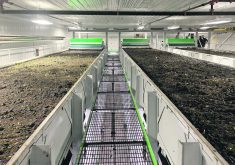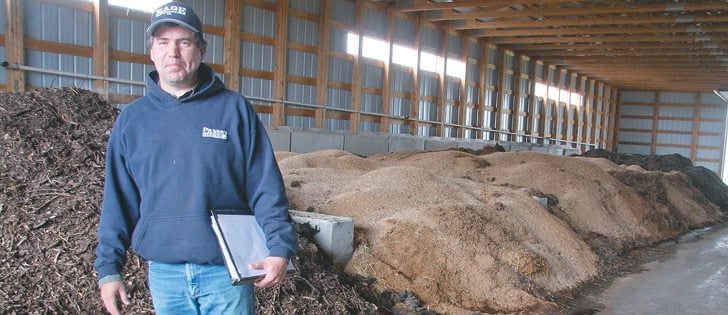Avid gardeners swear by the making and use of compost and those who want quicker compost availability can get it with the Berkeley compost method.
Julia Mitchell of Southern Alberta Permaculture shared her experiences in April with members of the University of Lethbridge community garden association.
She said the more labour intensive composting method can yield usable garden material within two to three weeks compared to the more traditional leave-alone method that can take a year or more.
Mitchell said the first step is to use material chopped into pieces of one half to 1.5 inches (2.5-3.8 cm). This is particularly important for woody materials but not as necessary with soft tissue waste such as spoiled fruit and vegetables.
Read Also

VIDEO: Bittersweet harvest for this family farmhand
Bruce Burnett helps his brother harvest wheat and canola for the last time on the family farm in Manitoba where they both grew up.
Step two involves the ratio of carbon to nitrogen, recommended at 30:1.
“This ratio is very important,” said Mitchell. “If there is too little carbon, the nitrogen will be lost to the air.”
Composters should think of carbon as dry plant materials such as dry grass, straw and sawdust. Nitrogen is represented in wetter materials such as grass clippings, vegetable waste, coffee grounds and manure.
Mitchell recommended layering the two types of materials in the compost pile, pit or bin. Step three is to add water, aiming for 50 percent moisture content.
She achieves this by spraying each layer with a hose while layering compost materials.
“If it’s a sloppy mess and it smells, you have too much water,” said Mitchell.
The fourth step is heat. Some volume is needed to generate heat, caused by a reaction between the carbon and nitrogen, Mitchell said. She recommended building a pile three feet by three feet (0.9 x 0.9 metres) for manageable size.
Once the material is assembled and the pile has sat for several days, Mitchell said composters should be able to feel heat in the pile by sticking in their arm. A thermometer will also do the job, and the goal is to turn the pile before it exceeds 71 C.
Turning is the fifth step. This should be done every two days, putting the outside material from the pile into the middle. Less frequent turning will lengthen the compost process but it will still work, provided the pile does not get too hot, Mitchell said.
A high temperature kills the beneficial bacteria and can stop the compost process.
Monitoring is the sixth step, said Mitchell.
“You should see higher temperatures in your pile within 24 to 48 hours.”
Establish a pile or bin and do not keep adding to it because this disturbs the carbon to nitrogen ration. Store new material in another area with which to start a separate pile or bin, Mitchell said.
If more carbon appears to be needed at some stage, she recommended adding sawdust, which breaks down quickly.
Soil should not be added to the compost pile or bin, she said.
“It adds to the weight of your pile and doesn’t contribute to decomposition.”
She also advised against adding ashes from stoves or fireplaces, nor should manure from carnivorous animals be used because of associated pathogens.
If the process is working properly, the pile should smell like soil. It should be warm and when turned, white fungi should be visible in the material. Volume will shrink and the material will turn dark brown.
If all steps are followed, a three by three foot pile should yield about one wheelbarrow full of compost within two to three weeks.
“It’s not a science,” said Mitchell. “You sort of have to do trial and error.”
She prefers establishing the pile on a hard surface so it is easier to move when turning. Piles can also be easier to turn than material in bins, though devices are available to help turn material in bins and containers.
Robert Raabe, a professor of plant pathology at the University of California, Berkeley, developed the Berkeley compost method.
- Chop material
- Establish 30:1 carbon and nitrogen ratio
- Add moisture
- Measure heat
- Turn material every two days
- Monitor the process
- Use compost where desired


















